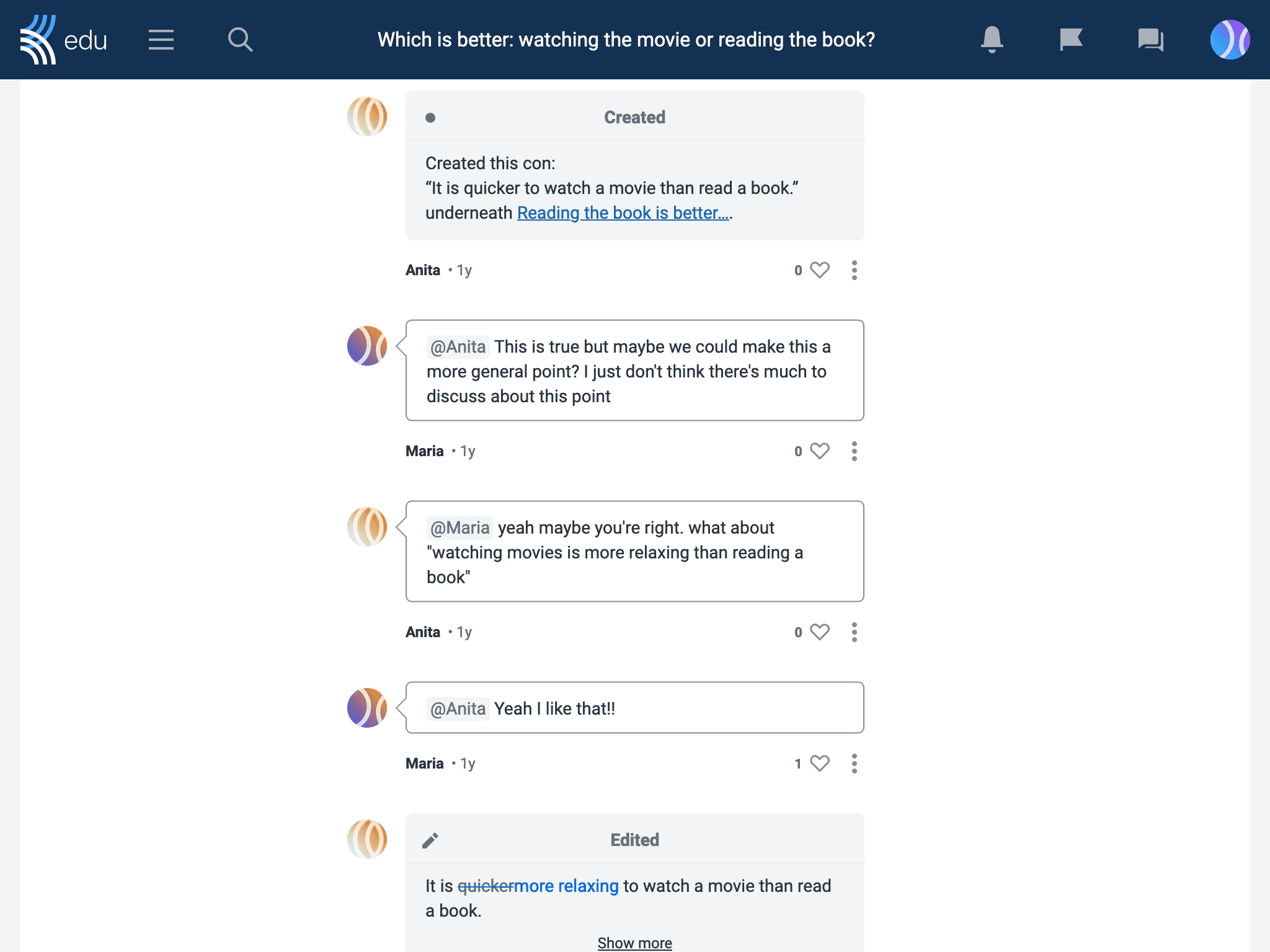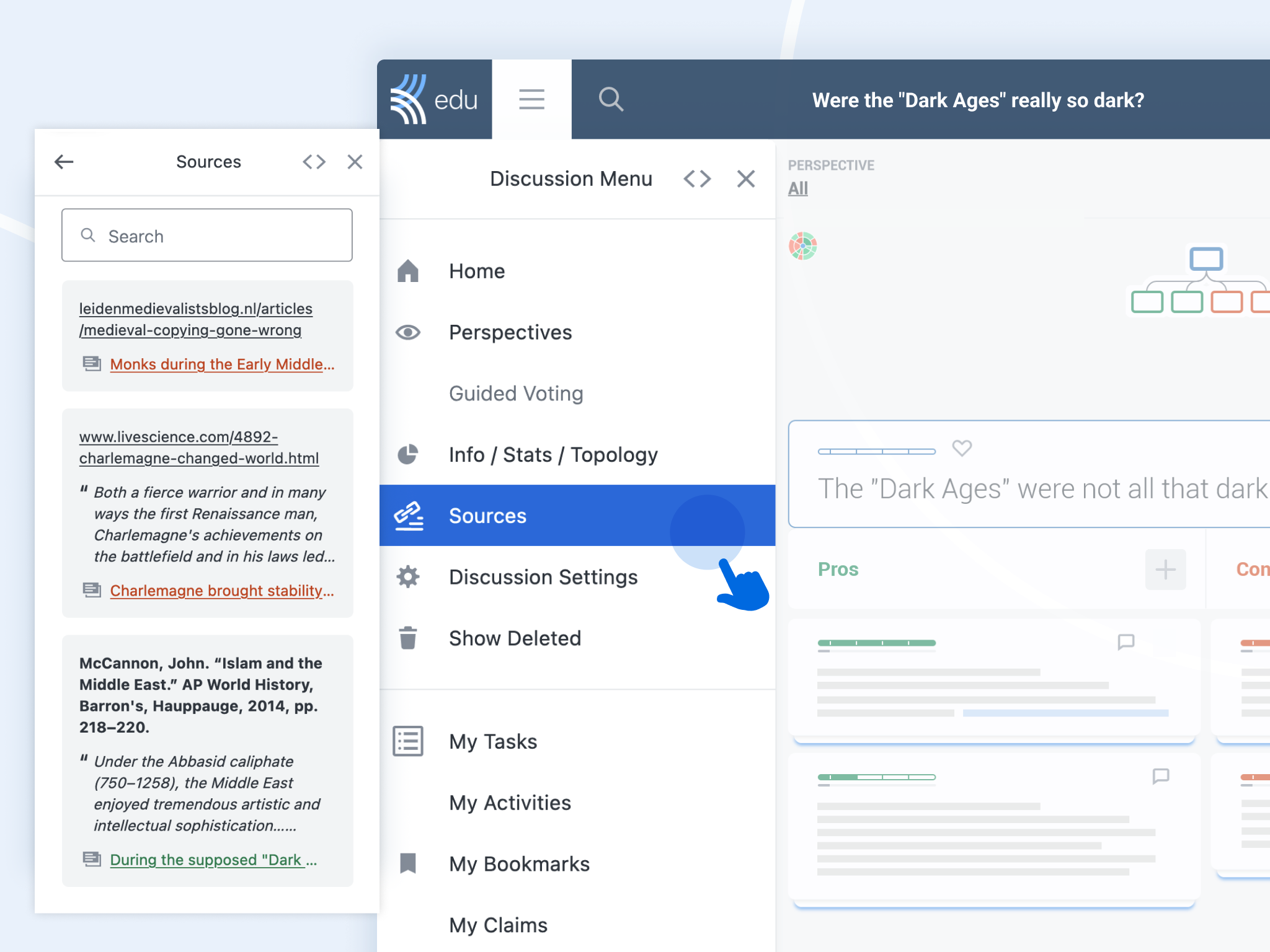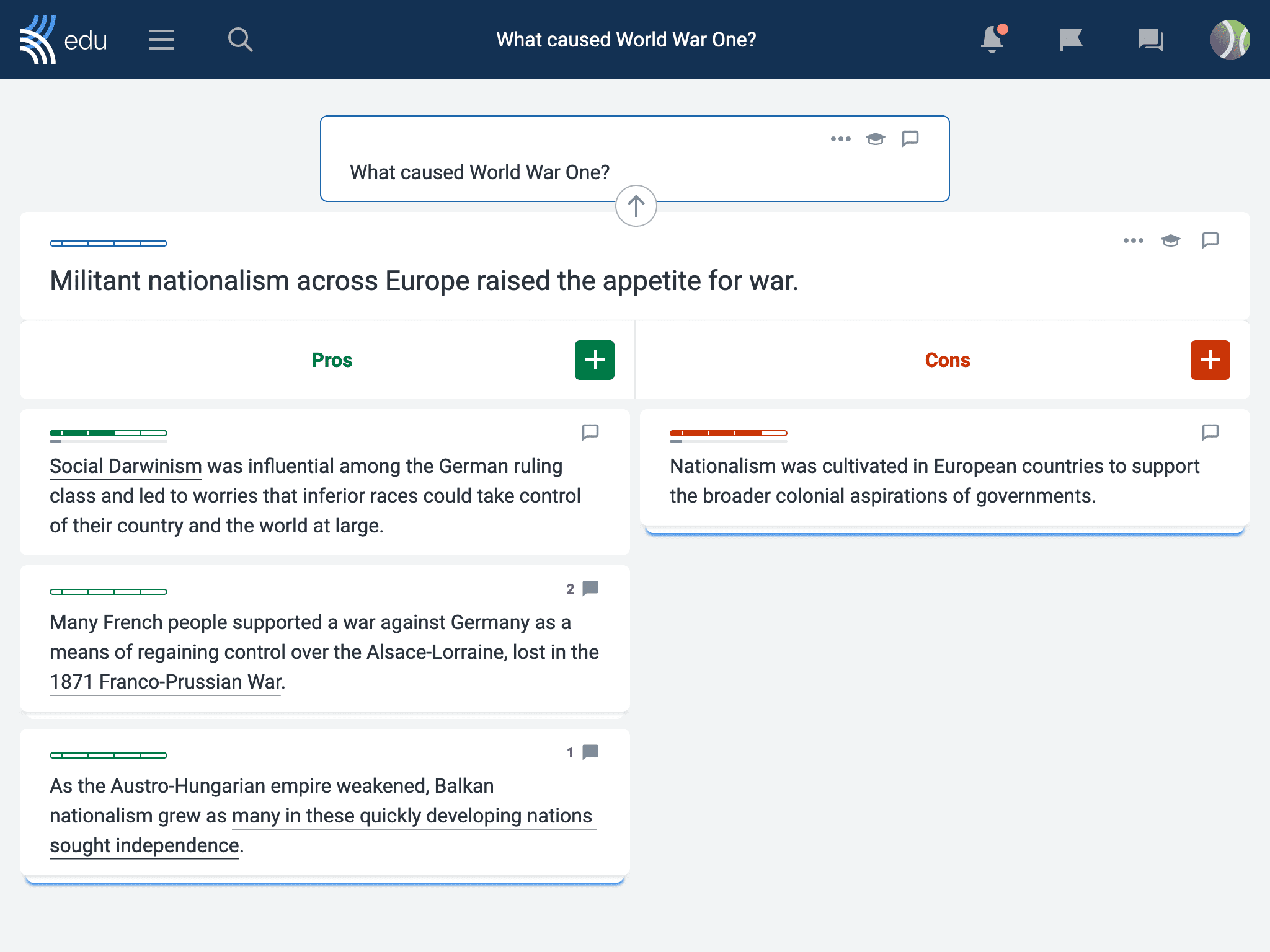The International Day of Peace (IDP) takes place annually on the 21st of September. Educators can celebrate this important day by teaching students the skills, attitudes, and values necessary to foster a peaceful society.
Class discussions can deepen students’ understanding of important historical and current events through the lens of peace and conflict. Here are a selection of discussion topics from Kialo Edu to help students develop skills such as respect and empathy, which are crucial for good civic discourse and peaceful ideals.
1. What was the main cause of World War I?
After originating as a small conflict in Southeast Europe, World War I grew to involve over 30 nations and is estimated to have taken 16 million lives. Develop your students’ understanding of the reasons for conflict by examining the main causes of this global war.
2. Was the atomic bombing of Japan justified?
The atomic bombings of Hiroshima and Nagasaki are estimated to have taken 200,000 lives instantly. In this discussion, students can learn about the extreme consequences of conflict by examining whether these bombings were justified.
3. Was the United States right to fight the Vietnam War?
Involvement in the Vietnam War resulted in significant human and financial costs for the United States. Engage students in exploring the escalation of conflict and the resulting costs through discussing whether the United States was right to become involved in this war.
4. Is justice more important than peace?
Many people would suggest justice and peace are intertwined. However, pursuing justice in times of conflict sometimes comes at the expense of peace. Your students can discuss whether justice is more important than peace in this debate.
5. Should we ever use force to create peace?
Force and peace appear incompatible, and yet authorities often favor the use of force to create peace. Even United Nations peacekeepers can use force in self-defense or in defense of their mandate. In this discussion, students can decide whether it is ever acceptable to use force to create peace.
6. Is pacifism moral?
Pacifism is a belief that war and violence are unjustifiable, and conflict should be resolved peacefully. Students can explore the moral issues relating to pacifism in this discussion. Is peace only possible if everyone gives up violence, or does pacifism actually allow suffering to continue?
Why Kialo discussions are great for fostering peaceful discussions
Kialo discussions are packed with features to help students develop the skills and attitudes needed to participate effectively in productive, peaceful discussions.
1. Students can visualize arguments to gain deeper understanding
The argument-mapping structure of Kialo discussions offers a clear visual representation that there can be multiple views on any issue. Asking students to consider both the pros and cons of a topic encourages them to develop a deeper understanding.
2. Kialo discussions encourage collaboration
Kialo discussions work best collaboratively to help students become better communicators. By interacting with others in discussions, students are able to consider multiple perspectives, respond respectfully to others’ opinions, and become accustomed to having their own views challenged.

Additionally, students practice convey opinions clearly and respectfully to other team members, using their problem-solving skills to resolve potential conflicts peacefully.
3. Kialo discussions foster digital literacy skills
Filter bubbles, echo chambers online, and disinformation are now a key part of modern conflict. Thus, students need to become adept at judging the reliability of information.
In Kialo discussions, educators can task students with using sources to support claims, helping students to recognize the importance of developing opinions based on facts.

Then, educators can lead students in critically evaluating sources to ensure reliability. Teaching students these media literacy skills will contribute to the fight for peace — online and offline!
So, let’s use this year’s International Day of Peace as a launchpad to start building skills, attitudes, and values that students can take forward to contribute to a peaceful society.
Contact us at feedback@kialo-edu.com or via social media to let us know how you will be celebrating this year’s International Day of Peace.


